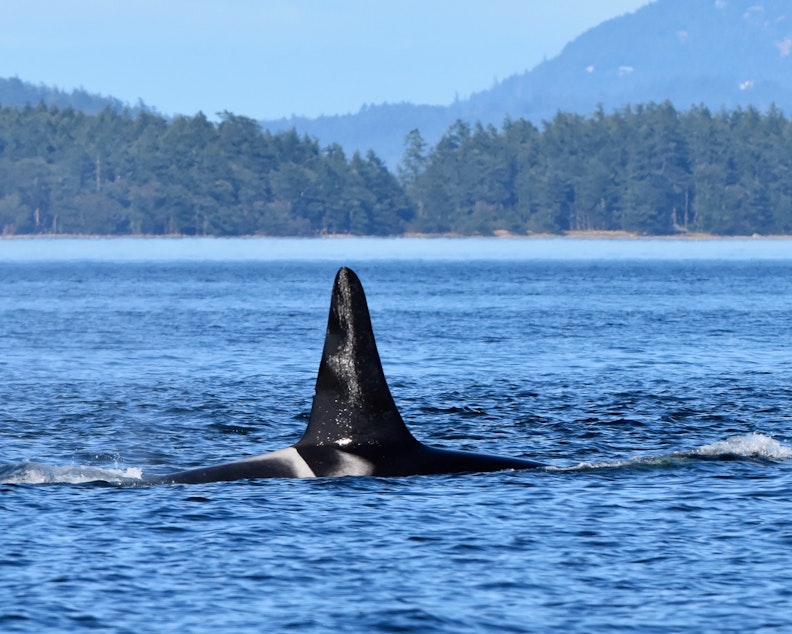Why 2021 was a whale of a year for orca sightings

Last year was a banner year for whale watching in Washington state. That is, as long as you weren't looking for the region's resident endangered orcas.
The Bigg's killer whales were most visible in 2021; they were sighted more than 1,000 times, up from about 750 sightings in 2019. To the delight of whale watchers, they’re seen here year-round now.
But the Bigg's whales aren't locals. They're transients that aim to feast on the abundant seals and sea lions in the Puget Sound.
There were also lots of humpback whale sightings, according to the Pacific Whale Watch Association. The group says its tour boats helped keep others from getting too close to whales or otherwise harassing them.
Of course, some whale lovers argue the best way to look for whales without disturbing them is from shore, with a good pair of binoculars.
Southern residents
Sponsored
Meanwhile, the southern resident orcas that rely on Chinook salmon are no closer to getting off the endangered species list than they were five years ago; they've been on that list for 16 years now.
Adding a species to the endangered species list is supposed to get them the protection they need to rebound. Yet he southern resident orcas are still at serious risk of extinction.
The federal government this month finished up its five-year-review of whether the southern residents could come off the list, and acknowledged no real progress has been made.
Srkw 5 Year Review 2021
Whale advocates hope legislators in Congress and in Olympia will dedicate major new funding this year to help salmon; when the salmon thrive, so can the 73 resident orcas that eat them.
Sponsored
The federal review of the southern residents hesitated to point to any one issue keeping their population dangerously low: "Despite being studied for more than 40 years, it is unclear which threat to this killer whale population is the most important for recovery."
Researchers are more clear. They blame the collapse in Chinook salmon runs from the Fraser River and others around Puget Sound for the residents' decline.
The federal review does count "prey availability" as a key factor, with a "high" severity rating; however, the report also takes an optimistic view of recovery efforts, indicating a "high" likelihood the issue can be mitigated.
Contaminants in the Puget Sound, the "inadequacy of existing regulations," boat traffic and disease are also high on the government's list of concerns.
In any case, the remaining southern residents don’t spend time in the Sound the way they used to.
Sponsored
The southern residents were basically absent this summer with few notable exceptions, some of which caused more concern than excitement; one beloved whale, known as Cappuccino, was presumed dead in July after he was spotted trailing several miles behind the rest of his pod and struggling to keep moving against the strong current.
The Orca Behavior Institute spotted at least 50 whales from the J, K, and L pods, including a young calf, that month.
Institute Director Monika Wieland Shields said they got together for their version of a barbeque. They were active and happily socializing.
From the shore, Wieland Shields says the whales seemed healthy, energized and grouped close together as they breached the waters and twirled through the air.
But they didn't stay long, because there wasn't much to eat.
Sponsored
"These guys, especially in the spring and summer, are focused on Chinook salmon returning to the Fraser River," Wieland Shields explained. "And as those numbers have declined, we've seen the whales needing to go elsewhere this time of year to find enough to eat."





